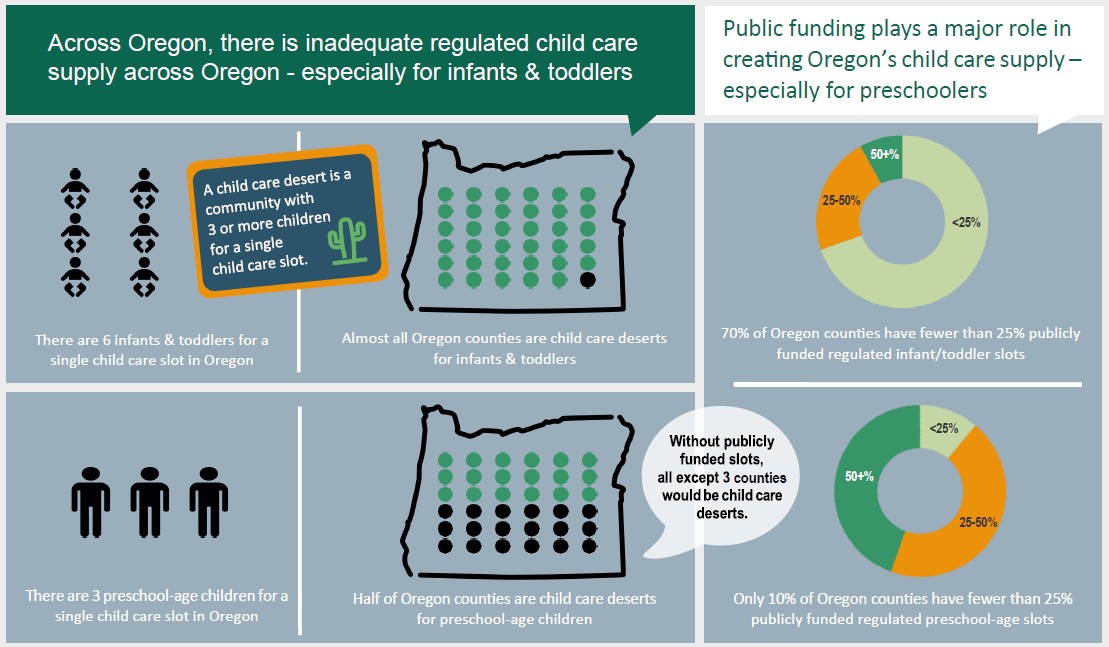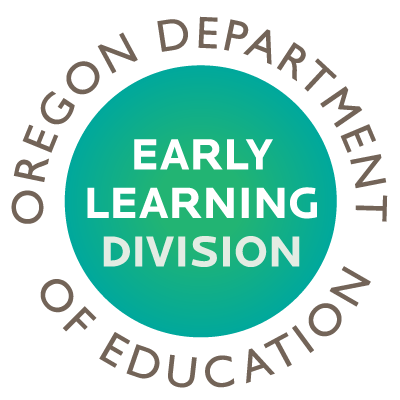News

What is a child care desert? A child care desert is an area where at least three children exist for every child care slot available. Severe deserts are defined as having at most one slot for every 10 children.
According to a new report from Oregon State University, child care slots for Oregon’s young children grew by almost 5% from March 2020 to Dec. 2022. This was thanks, in part, to increased public funding for child care and early learning programs.
“The increased availability of child care slots since 2020 demonstrates the effectiveness of public investments and federal relief. It’s a good sign, but we can’t lose momentum,” said Alyssa Chatterjee, Early Learning System director at the state Early Learning Division. “We need to continue these investments in early learning and child care, and communities agree.”
Since March 2020, eight of Oregon’s 36 counties have moved out of desert status for preschool-aged kids, and another eight became less severe deserts for infants and toddlers.
“We’re seeing a lot of those counties coming out of desert status because of the additional supply being developed from public funding,” said Michaella Sektnan, co-author on the report and senior faculty research assistant in OSU’s College of Public Health and Human Sciences.
“Without that public funding, all except three counties would be child care deserts.”
Read the full release and view the OSU Child Care Desert Report. Or, see the infographics from the report.
The report drew its data from multiple programs administered by the state’s Early Learning Division, including Oregon Prenatal to Kindergarten, Preschool Promise and Baby Promise. Researchers also included numbers from federal Head Start/Early Head Start, tribal Head Start, and Migrant and Seasonal Head Start programs. On the private side, data came from Find Child Care Oregon, which is administered by Central Coordination of Child Care Resource and Referral, with data gathering partnership from statewide Child Care Resource and Referral agencies.



